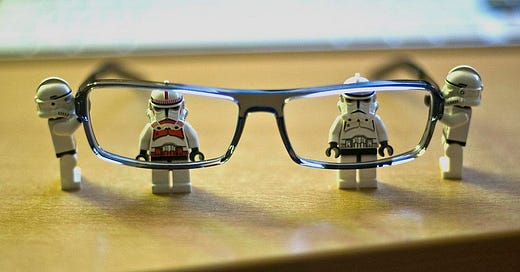Be clear — if research communications had 10 commandments, this phrase would be toward the top of the tablets. Because, as we all know, clear is the last thing most researchers are, and lack of clarity the biggest obstacle keeping the rest of us from enjoying the fruits of research knowledge. Stupid researchers! as Homer Simpson might say.
Stop and think about the assumptions behind those assumptions. “If only I were clear, then everyone would understand and agree with me.” “If only they were clearer, more people would act rationally because they would understand what the evidence says.” How well do these assumptions work for you in real life? So why would you think people would make an exception for researchers?
Celsius vs. Fahrenheit. Really?
I’m all for clarity. I’m all against the fetishization of clarity, the magical thinking in research communications that sees widespread impact and global change as just a messaging tweak away. You can see this magical thinking in New York Times columnist German Lopez’s take this week that talking about global warming in Celsius rather than Fahrenheit temperatures prevents people in the United States (where Fahrenheit is still the standard) from comprehending the full impact of climate change. Lopez argues that warming of 1.5 degrees Celsius is a “small, meaningless number” to Americans. But
By translating that figure to its Fahrenheit equivalent — 2.7 degrees — it can take on a clearer meaning. Katharine Hayhoe, a climate scientist, uses the analogy of a fever: Think about how much worse you feel when you run a fever of 101.3 degrees Fahrenheit, 2.7 degrees above normal. That fever is the equivalent of what the planet is facing.
Most Americans can grasp that analogy because it speaks to their own experiences. They can’t do that with Celsius. “It is absolutely essential to communicate in terms and language that people understand,” said Hayhoe, who is from Canada, which uses Celsius.
But the planet is not a person — no one adult and sane understands it as such. The planet is not having a fever; the planet is a place where the difference between 40 and 42.7 degrees Fahrenheit — or 80 and 82.7 degrees Fahrenheit, or 120 and 122.7 — are negligible. The argument for translating global warming into Fahrenheit could instead easily be an argument against using temperature at all to bring home the impact of climate change to an agnostic public. Only someone lost in the clarity fetish could believe otherwise. (Or believe, as Andy Revkin apparently does, that explaining climate change using the UpGoFiver text bot — a chat bot that limits you to the 1,000 most commonly used words, leaving out “pollution,” “energy,” “warming,” “fuel,” and “atmosphere” — could educate anyone not already paying attention.)
The clarity fetish is the information deficit fallacy in disguise. If only we were clear enough, the public would understand. At no point do we question the idea that, no matter how clear we might become, they might want something different than what we are selling — by which I mean context, insight and perspective (the stuff of expertise), not just clarity.
The fetishization of clarity helps drive the arms race of headline science, in which single studies that can barely carry the weight of their own findings get overframed into Strong Guys, outslugging whole literatures that they contradict. The dream of the clarity fetishists is to get the messaging so right that no one can ignore it — whether the study deserves that attention or not.
Alan Alda and the Clarity Fetish
The actor and science communications enthusiast Alan Alda is a devoted adherent of the clarity fetish. In a Science magazine piece published last year headlined “Communicating with clarity,” former Science editor Holden Thorp quotes Alda on how he gets scientists to shed their “guru on the hill routines” and embrace more accessible language:
“When I did Scientific American Frontiers, I felt that the reason the interviews were going so well was because they weren’t conventional interviews,” he told me. “I didn’t come in with a list of questions that I read out. I went in just wanting to understand. And if I didn’t understand, I said ‘I don’t get what you’re telling me. Tell me again. Tell me in a different way.’”
I’ve engaged in this process myself hundreds of times with researchers over my career (and had a shiver of PTSD from some of them as I read Alda’s “Tell me again. Tell me in a different way”). But let’s be clear: The obstacle isn’t the researcher’s curse of knowledge. The obstacle has always been that the individual piece of research (or the big, meaningful number) the researcher is selling isn’t all there is to knowledge. Alda admits as much to Holden:
We talked a lot about the difficulty of conveying that science is a self-correcting work in progress. Alda agreed this is a critical hurdle. “[Journalists] have to get a story out and they have to make it readable,” he argued. “There’s a natural tendency to avoid ambiguity. Not just ambiguity, but nuance. Science has to make it clear that it’s on a road to truth or it’s on a road to understanding, and an express stop along the way isn’t the whole thing.”
Alda, I think, thinks the answer here is to talk about scientific process — i.e., even more science. I vote instead for more context, insight, perspective and argument — by experts, about what they know and why they think they know it, about the solutions and new ideas and reframing of challenges that many or all of us face, and not just the things that science can more clearly say.





